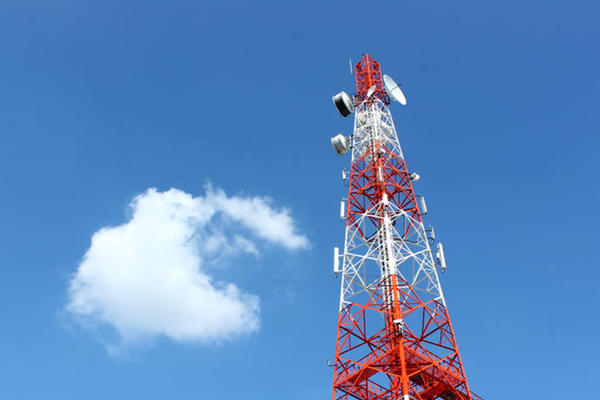Wi-Fi antennas are essential components that power modern wireless communication, providing users with high-speed, reliable internet connectivity. Whether at home, in the office, or across vast networks, Wi-Fi antennas play a key role in extending coverage, improving connection stability, and ensuring faster data speeds. With advancements in technology and increasing demands for high-performance internet, understanding the different types of Wi-Fi antennas and their functions is essential for choosing the right antenna for specific needs. In this article, we explore Wi-Fi antennas—how they work, their types, and the factors to consider when selecting the best wireless antenna for your environment.
How Does a Wi-Fi Antenna Work?
A Wi-Fi antenna is a device that transmits and receives radio frequency (RF) signals between a Wi-Fi router and connected devices, such as laptops, smartphones, and smart home devices. Operating in the 2.4 GHz and 5 GHz frequency bands, Wi-Fi antennas convert electrical signals from the router into radio waves, which are transmitted to and received from nearby devices.
When data packets travel through the Wi-Fi network, they are encoded as electromagnetic waves and broadcasted by the Wi-Fi antenna. Devices within the signal range pick up these waves through their internal wireless antenna, enabling seamless data transmission.
Types of Wi-Fi Antennas
Different types of Wi-Fi antennas are available, each designed to fulfill specific requirements in terms of range, directionality, and coverage. The right antenna enhances signal strength, coverage, and connectivity quality, depending on the environment and usage.
1. Omnidirectional Wi-Fi Antenna
An omnidirectional Wi-Fi antenna emits signals equally in all directions. These antennas are widely used in homes and offices, providing 360-degree coverage that allows devices in various locations to access the network. Omnidirectional antennas are ideal for situations where Wi-Fi coverage is required in multiple directions, such as in open office spaces or residential buildings.
The primary advantage of omnidirectional antennas lies in their ability to reach multiple devices without requiring alignment, making them a popular choice for general Wi-Fi connectivity.
2. Directional Wi-Fi Antenna
A directional Wi-Fi antenna focuses its signal in a specific direction, providing a stronger, more concentrated signal over a greater distance. Unlike omnidirectional antennas, directional Wi-Fi antennas work best when devices are positioned in a targeted area. They are ideal for point-to-point connections, such as connecting multiple buildings in a campus or providing Wi-Fi coverage across large outdoor spaces.
Types of directional antennas include Yagi antennas, panel antennas, and parabolic dish antennas. These antennas provide excellent range and signal strength but require precise alignment toward the intended coverage area for optimal performance.
3. Sector Wi-Fi Antenna
Sector Wi-Fi antennas are used in cellular and Wi-Fi networks to provide coverage in a specific sector or area. Commonly seen in outdoor Wi-Fi networks, sector antennas are mounted on towers or buildings to cover designated areas. These antennas are often used in public spaces, stadiums, or large open venues where high coverage density is required.
4. Dipole Wi-Fi Antenna
A dipole Wi-Fi antenna is one of the simplest types of Wi-Fi antennas, commonly used in home routers. The dipole design consists of two metal rods aligned on the same axis, allowing it to emit signals in all directions with moderate strength. While effective for small spaces, dipole antennas are not as powerful as directional or sector antennas and are best suited for basic indoor coverage.
Key Factors for Choosing the Right Wi-Fi Antenna
Selecting the right wireless antenna for your Wi-Fi network requires careful consideration of several factors. The type of environment, intended coverage area, and interference levels all influence antenna performance. Here are some factors to consider when choosing the best Wi-Fi antenna.
Coverage Area
Understanding the coverage area is essential when selecting an antenna type. For small, enclosed spaces, omnidirectional or dipole antennas provide adequate coverage, while larger outdoor areas or point-to-point connections benefit from the focused reach of directional antennas.
Frequency Band
Wi-Fi antennas operate on either 2.4 GHz or 5 GHz frequency bands, with some dual-band antennas supporting both frequencies. The 2.4 GHz band offers a longer range but is more susceptible to interference, whereas the 5 GHz band provides faster speeds with a shorter range. Selecting a dual-band antenna allows flexibility in environments with varied needs for speed and range.
Gain
Antenna gain, measured in dBi, refers to the strength of the antenna’s signal transmission and reception. Higher gain antennas focus more power in a specific direction, allowing them to cover longer distances. High-gain directional antennas are suitable for outdoor applications and long-range connections, while low-gain omnidirectional antennas perform well in indoor environments where the signal needs to reach multiple devices.
Interference
In crowded areas, Wi-Fi signals can face interference from other electronic devices, Wi-Fi networks, or even physical obstructions like walls and furniture. Antennas with strong interference-handling capabilities, such as those operating on the 5 GHz band, help reduce interference, ensuring a stable connection.
Installation Environment
Consider whether the antenna will be installed indoors or outdoors. Outdoor antennas are designed to withstand weather conditions and are usually housed in protective casings, whereas indoor antennas require less protection and are optimized for smaller spaces.
Applications of Wi-Fi Antennas
Wi-Fi antennas find applications in various settings, from homes and offices to large-scale public networks. Their versatility allows for seamless connectivity in different scenarios.
Home and Office Networks
In homes and offices, omnidirectional Wi-Fi antennas provide comprehensive coverage for connected devices throughout the area. These antennas support everyday internet activities like browsing, streaming, and video conferencing, delivering stable connectivity across multiple rooms.
Public Wi-Fi Networks
Public spaces like parks, stadiums, and shopping centers rely on sector antennas to deliver Wi-Fi coverage to specific areas. Sector antennas can handle many users, providing strong connectivity in open or crowded areas.
Industrial and Outdoor Networks
Industries such as logistics, mining, and agriculture benefit from directional Wi-Fi antennas that provide extended range and high reliability across large outdoor spaces. These antennas facilitate data transmission and real-time monitoring across expansive environments.
Campus and Point-to-Point Networks
Campuses and large facilities use directional antennas to create point-to-point or point-to-multipoint connections, linking different buildings or areas. These antennas are suitable for environments that require stable, long-range connectivity, like educational institutions or business parks.
Future of Wi-Fi Antennas in 5G and Beyond
With the introduction of 5G networks and Wi-Fi 6, Wi-Fi antennas will play an increasingly significant role in delivering faster, more reliable connectivity. Wi-Fi 6, the latest Wi-Fi standard, offers increased data speeds, lower latency, and improved performance in dense environments. Wi-Fi antennas optimized for Wi-Fi 6 will provide enhanced network capacity, supporting more devices in busy locations.
As 5G networks continue to roll out, Wi-Fi antennas will complement 5G infrastructure by providing local coverage in areas where 5G signals are limited. Advanced antenna technology will enable seamless integration between Wi-Fi and 5G, creating unified connectivity solutions for future smart cities, autonomous vehicles, and IoT networks.
Conclusion
Wi-Fi antennas, whether omnidirectional, directional, or sector-specific, are essential for effective and reliable wireless connectivity. They determine the range, strength, and direction of the Wi-Fi signal, catering to varied applications in homes, businesses, and public spaces. With the rise of Wi-Fi 6 and the impending growth of 5G, wireless antennas will continue evolving to meet the demands of faster, more reliable internet. Choosing the right Wi-Fi antenna enhances user experience by ensuring stable and robust connectivity in any environment.




